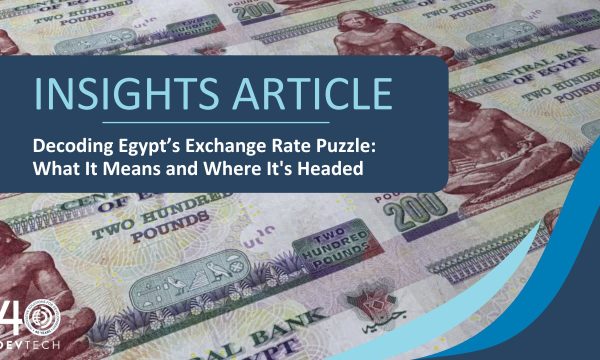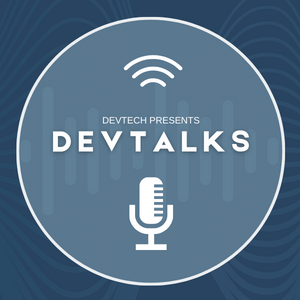Artificial intelligence (AI) holds the potential for emerging economies to reinvent their economic infrastructure to accommodate and overcome development challenges and build dynamic economies. Emerging economies already use publicly available AI modules to solve local challenges in fields ranging from energy and manufacturing to education and financial services. For example, Mexican healthcare firms use AI to analyze data to improve health outcomes for diabetic patients, Indian firms use AI to allow customers to compare medical service prices, Kenyan financial institutions use AI to predict loan default probabilities, and 12 sub-Saharan African countries use AI to develop solar powered payment model for rural homes [1].
However, while AI is enabling each of the innovative services listed above, each comes with huge inclusivity concerns. Is AI producing equally good health improvements for female and male patients in Mexico? Are medical services in India auto-selected for women to maximize price? Do AI algorithms think Kenyan women are at a higher risk of default compared to their male counterparts simply because they have less credit history? Considering gender for AI requires a comprehensive look starting at algorithm design, to deep analysis of an algorithm’s outputs to ensure gender biases are mitigated or eliminated. The time to emphasize the importance of developing practices that will help prohibit bias in AI now and in the future is now. COVID-19 has accelerated AI implementation as public and private sector service providers seek alternative methods to maintain essential services despite necessary lockdowns and travel restrictions [2].
Contributors to Gendered Outcomes in AI
As with any new technological advancement, there is a residual inequality that tends to be a consequence, and AI is no different [3]. There is the inherent risk of algorithmic discrimination and bias, meaning that there is a systematic and repeatable error within the program that creates unfair outcomes [4]. To break this down, it is important to understand how an AI program is created and identify where these biases originate. We have broken down the AI development process into three steps:
- Collection and selection of training data. The first step in the AI lifecycle is collection and selection of the training data to design the algorithm. This data is based on real outcomes such as manually taken MRI scans to detect disease. A key consideration is whether the data used to create the algorithm is an accurate or equal representation of real-world outcomes. Did this data have underlying biases? Was it collected fairly, and would it accurately represent the population? For example, an algorithm set to review CVs may use data from the last five years of a company’s employment; however, if most hires in the past five years were men, the algorithm may learn that male candidates are better or preferable.
- Creating tests and models. The next step of the AI development lifecycle is the creation of tests and models by AI architects. Algorithms essentially learn the architect’s unintentional biases which are perpetuated through linguistic semantics [5]. For example, algorithms often correlate the words men and ‘leader’ and women and ‘helper’. This can create systemic biases for algorithm’s designed to shortlist CVs by detecting certain skills.
- Manual testing. Another contributor to AI bias is during manual testing, where a human approves or rejects the AI output to refine the algorithm to improve its accuracy. This point allows the AI to learn and reflect the architects own personal biases when there is no bias testing. These biases are only heightened as a result of AI architects being overwhelmingly male, according to the World Economic Forum 2018 Global Gender Gap Report only 22% of AI professionals globally are female [6].
Potential Use Cases for Artificial Intelligence
Use cases that DevTech has outlined and that could potentially have biases associated with them include:
- Onsite Quality Assurance: Apply AI techniques to cross-reference data collected at health service facilities with that submitted by implementing partners, to identify patterns in service quality.
Potential bias: The dataset used to test quality of service might be biased towards one gender and the test data could inadvertently result in a lower quality of service for women’s health issues or female patients. There may also be bias in model testing as the human architect’s bias could come out if not properly controlled for. There may need to be multiple individuals with diverse backgrounds to test the algorithm.
- Optimize Household Cash Allocation: AI technology could be used to create a household economic analysis that would determine the impact of allocated resources within households. The value of this would be that the algorithm would then be able to determine an optimal household resource allocation that takes into account contextual conditions.
Potential Bias: The test datasets used may be bias towards men depending on how the data was extracted, i.e., surveys. Women’s spending patterns also differ from that of men, including higher consumption of education and health services, which may impact household economic and social improvement differently.
- Survey Improvement: Employ AI tools to streamline field surveys by identifying questions or wording of questions in subsequent analysis and eliminating those that are not useful.
Potential Bias: A key bias to consider in this application would be the language of the survey. Many linguistic studies argue that words hold biases. To apply AI in this scenario properly, the researchers would need to consider gender bias in the wording or selection of questions.
Conclusions and Recommendations
These suggested use cases could benefit USAID programming in terms of effectiveness and cost savings. However, without ethical guidelines, policies and bias testing set in place to mitigate biases towards gender or other marginalized groups, then the cost of potentially increasing inequality would severely limit the impact of AI on USAID programming. This is a conversation DevTech welcomes, and priority needs to be given to establish policies that consider gender equality at every stage of the AI life cycle, from process development and data collection to creating and testing algorithms.
References
- https://blogs.worldbank.org/digital-development/how-ai-can-help-developing-countries-rebuild-after-pandemic
- “Mrazek, Monique; O’Neill, Felicity. 2020. Artificial Intelligence and Healthcare in Emerging Markets. EMCompass; Note 91. International Finance Corporation, Washington, DC. © International Finance Corporation. https://openknowledge.worldbank.org/handle/10986/34855 License: CC BY-NC-ND 3.0 IGO.”
- Alex- Baldwin book
- https://arxiv.org/pdf/1810.01943.pdf
- https://www.semanticscholar.org/paper/An-analysis-of-gender-bias-studies-in-natural-Costa-juss%C3%A0/540051a3cf9fa69c26fa9cc612826d513670ad6a
- http://www3.weforum.org/docs/WEF_GGGR_2018.pdf








